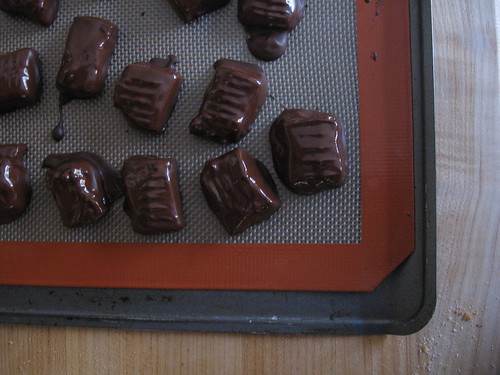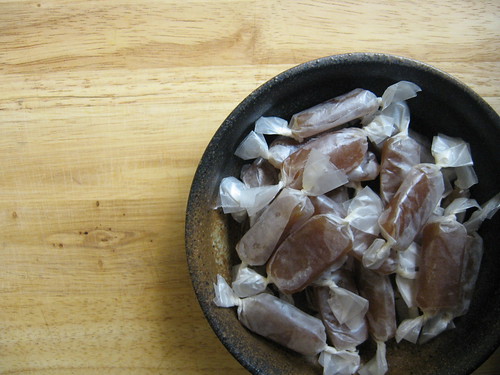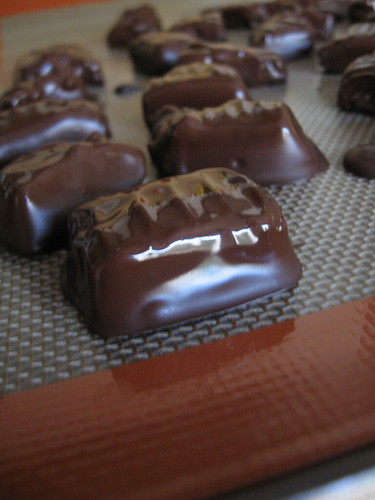My sophomore year of college I travelled to rural Pennsylvania with a good friend for Thanksgiving. Her family owned an apple orchard, and I spent Wednesday morning pressing my own cider.
It was a heady experience—much like making stock from scratch for the first time and discovering the true inferiority of box, can, and foil-wrapped brick. Why had I ever bought apple cider before? How would I ever enjoy it again? What reason had I for going to college when my true calling was to be an apple farmer?
In retrospect, I probably wouldn't be a very good apple farmer; I would be far too likely to hoard my apples, sitting on a slowly mounting pile of pastries and cores, licking applesauce off my fingers while growing to monstrous proportions.
Earlier in the week I made a pie for a friend. She had been sick earlier in the year, and I promised her a pie all for herself when she convalesced.
Is there any easier pie than apple? Don't ask me that today. A confluence of events left me with a lackluster filling, a soggy bottom crust, and a mockingly delicious, flaky, shatter-under-your-fork top crust.
I love the way the top crust sets before the fruit collapses on itself, leaving a little apple cathedral inside—the Duomo delle mele, if you will.

Luckily for my friend, I embarked upon an experiment while the pie dripped apple syrup all over my oven—an experiment, based on vague memories of articles and blog postings, that became a resounding success.

As you might know by now, I don't like to waste food if I can avoid it: no fewer than 4 bags of vegetable bits reside in my freezer, ready for stock, soup, or anywhere else I can fit them; I carefully hoard fat from roasting chickens for gravy or potatoes; I never need an excuse for ice cream or macarons—especially since I always have yolks or whites sitting in my fridge.
I remembered something about quince syrup being used for caramel (I did some research and remembered that it was this post from Chez Pim). As I prepared the apples for my pie, I tossed the peels and cores—stems, seeds, and all— into a large pot with just enough cold water to cover. I plopped it on the stove and set it to a boil for about 30 minutes, until the cores were softened and the peels limp. The mixture of Jonathan and Granny Smith apples that I was using for my failed pie left a lovely pink juice.

My biggest problem with caramel is avoiding crystallization: I just can't leave things alone in the kitchen, so I tend to overstir. Even crystallized caramel couldn't make this plan go wrong: the resulting candies, coated with chocolate, were similar to New Orleans praline or butterscotch squares. A few tweaks to the recipe, though, and the second batch was even more successful. The tang of the apple comes through in a rich, buttery, chewy bite of whimsy: this is my answer to caramel apples.

Another bonus, of course, is that you can use your trash to make holiday gifts for your loved ones.

Caramels aux Pommes, or Apple Caramels
1 cup Poor Man's Apple Cider (see below)
½ cup brown sugar
1 ½ cup granulated sugar
½ cup butter, softened and cut into small pieces
¼ cup heavy cream
Tempered Chocolate for dipping (optional)
To make the cider
Place a large pot in your sink with about ¾ cup cold water. As you peel 2-4 pounds apples for some delicious treat, toss the refuse (all peels, cores, stems, etc.—I shake out the loose seeds, but I don't worry about the rest) into the pot. After peeling and coring all the apples, place over medium-high heat and bring to a boil. Lower heat to medium and cook, stirring from time to time, until the juice is colorful and fragrant and the cores have completely distintegrated, 20-45 minutes. Let cool slightly, then strain through a sieve, pressing on the solids to extract as much juice as possible.
For the caramels
Butter an eight-inch square pan and line with parchment paper. Butter the parchment and set aside.
Place the sugar in a medium saucepan; add the apple juice, stir just to combine with a clean spoon and place over medium high heat. Bring to a full bowl.
When the sugars are completely dissolved, add the butter, a few pieces at a time, then the cream. Stir just to combine. Cook without stirring until your thermometer reaches between 248 and 250ºF (cook to a lower temperature if your kitchen is cold or if you prefer squishy caramel).
Remove from heat and pour into the prepared pan without stirring or scraping the pan. If desired, you can scrape the remaining caramel onto another small plate (it may crystallize).
Let cool, then cut into pieces and wrap in waxed paper or dip in tempered chocolate.
Notes for cutting: use a sharp knife dipped in hot water and saw gently with little pressure. It will take a bit of time, but it will be a lot less messy than the alternatives.
Makes about 60 small caramels

No comments :
Post a Comment